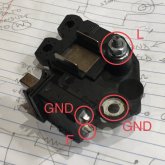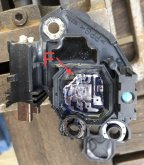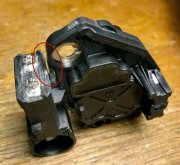jaffadog
New Member
- Joined
- Mar 1, 2020
- Messages
- 34
I have a Yanmar 3YM30 with the 120A Valeo alternator and I am installing a lifepo4 bank. I plan to use a Balmar mc-612 regulator. So I am attempting to convert the alternator for external regulation. Unfortunately, this alternator has a combined regulator + brush holder, which makes the conversion challenging. I know Balmar sell a replacement assembly for this very purpose! But the $200 price is off putting. Looking at the Valeo regulator, I see I could solder my own field wire to the brush holder and wire that to the external regulator, but I need to disable the Valeo regulator.
Does anyone know what the ps1 and ps2 pads are? They both seem to conduct to the W (waveform/tach) tap on the alternator. I think this is where the alternator is getting ignition/excite signal, and if so, these would be the pads I need to block.
Actually I might just look at putting insulating washers under all the pads except GND. maybe mica/ceramic? Or maybe take a Dremel and destructively remove those pads from the regulator.
thoughts?


Does anyone know what the ps1 and ps2 pads are? They both seem to conduct to the W (waveform/tach) tap on the alternator. I think this is where the alternator is getting ignition/excite signal, and if so, these would be the pads I need to block.
Actually I might just look at putting insulating washers under all the pads except GND. maybe mica/ceramic? Or maybe take a Dremel and destructively remove those pads from the regulator.
thoughts?







